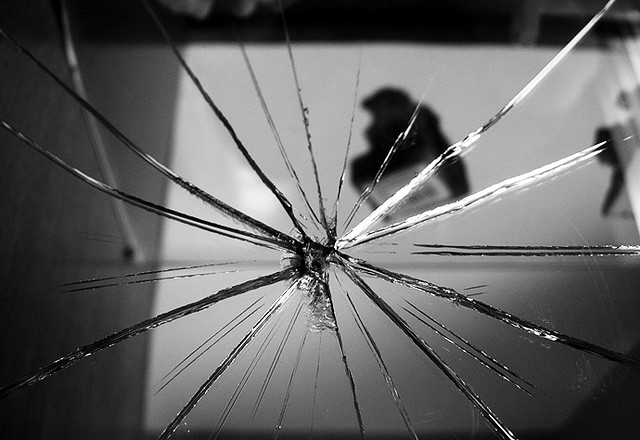
Trigger Warnings: Discussion includes references to mental health, self-harm, eating disorders, and su*cide.
Never has there been a more important time to address the transience of society’s perception of beauty than in the age of mass media. The internet has become a safe space for the normalisation of perceived insecurity, appreciation of diversity, self-love, and body positivity; it has also become cesspit for vitriolic comments that demean a person based on their exterior, falsified representations of real people, the glorification of a narrow set of physical characteristics, and chronic exposure to ‘perfect’ people launched into stardom. I do not mean to undermine the highly positive development that is this increasingly diverse representation of physical appearance, but rather draw attention to the persistent dark side of such an appearance-focused era.
Although what is viewed as physically desirable may be expanding, we continue to have our physical self-awareness heightened and so often cannot help but hold ourselves to standards completely differing from our own appearances. A recent US study investigated women between ages 18 and 25, discovering a link between Instagram and higher levels of self-objectification and body image related worries being developed — particularly amongst those frequenting fitness pages. This is part of a wider exposure to diet culture, weight loss motivation, before-and-after images, and toxic put-downs. It is also vital to acknowledge that while much value has been placed on the female appearance throughout history, with 11% of UK men surveyed in 2019 having experienced suicidal thoughts related to body image, this is a genderless phenomenon.
With the growing relevance of social media to our daily lives, children and adults alike are forced to reckon with their physical appearance, not only daily but every time they stumble on to social media — and assuming you’re anything like me then the frequency and duration of those stumbles is an embarrassing statistic best kept between yourself and those horrendous weekly screen time notifications. Easily accessible photoshop apps, filtered selfies, TikTok algorithms that prey on the insecure rifling through the pages of the ‘beautiful’, and undisclosed cosmetic surgery procedures are distorting beauty expectations and planting the seeds for judgment of both ourselves and others in accordance with unrepresentative standards.
Remember when Snapchat’s ‘dog’ filter debuted, and you would be hard-pressed to find a Snapchat story that wasn’t jam-packed with unironic selfies of everyone and their grandma dog-ified? What was interesting was that along with blatant dog features — such as the floppy ears, doggy nose, and long tongue — came other classic markers of man’s best friend: resurfaced skin, widened eyes and a slimmer jawline.
Snapchat and Instagram filters that alter our faces to fit one specific definition of beauty may seem fun, but they can also promote insecurity. They decide what features are necessary to ‘improve’ our looks. If you are a filter-lover who doesn’t mind their effect, that’s fine — we all love a good filter, and they can certainly be confidence boosters! However, it is important to acknowledge the specific beauty standards endorsed by so-called beautifying filters to understand why they can make people doubt their existing features. Maybe I didn’t want to have easy access to what a supposedly ‘perfect’ version of myself would look like, yet here we are. You can’t humorously place your features onto a broccoli, or pretend to be on a FaceTime call with Snoop Dogg without first scrolling past yourself with Disney princess eyes, full lips, a baby-like complexion, a smaller nose, fluttering eyelashes, and a chiselled chin — talk about unlocking new insecurities!
Understanding how the constant barrage of social media images impacts humans of all ages and genders feels especially vital when looking to the results from a UK Mental Health Foundation poll in 2019: one in three British adults have felt anxious or depressed as a result of their body image; one in ten women had “deliberately hurt themselves” as a result of their body image, as had one in twenty-five men; one in four men had felt depressed as a result of their body image; one in eight adults have had suicidal thoughts as a result of their body image.
It has been indicated women are significantly more dissatisfied and less confident after having viewed appearance-related TV adverts compared to those who were shown adverts unrelated to appearance. This seems to be exactly what beauty-related advertising sets out to do: encourage insecurity by facing us off with images of ‘perfection’. In the case of cosmetic adverts, this is done through before-and-afters, which use social constructs of ‘ugliness’ and ‘perfection’ to make us believe we can overcome our perceived physical shortcomings by buying the product. Mass media has led to a greater probability of adolescents (regardless of gender) developing body dissatisfaction which, in turn, is a predictor for eating disorders.
So, why do we care so much about what we look like? As social beings, we rely on one another for survival. These social bonds make our interactions with one another crucial for physical and mental wellbeing. We are socially conditioned to feel as though by looking a certain way, our value to others will increase. The media communicates an ‘ideal’ vision of beauty for the time and place we are living in through forms such as social media, advertising, television, magazines, and pornography. Our self-perception is adversely impacted when we find ourselves to fall short of different criteria for being ‘beautiful’.
Many of these trends in physical features, however, are simply that: trends in time and place. In a world where genetics influence our physical characteristics, it is impossible to meet a universal standard. Societal attitudes are reflecting what is, in reality, entirely fluid. The ideal body type for a woman has fluctuated dramatically from full-figured appearances to ‘heroin chic’ and ‘boyish’ figures. It is also deeply problematic to see how Eurocentric beauty standards have engulfed and whitewashed concepts of ‘beauty’. This reflects an international attitude to appearance arguably rooted in colonialism. Movements such a the Black is Beautiful movement from the 1960s and 1970s, and the Mexican indigenous movement rejected such colonial influences which have become foundational to much social conditioning. Such movements, along with increased representation, can empower individuals and provide the representation that boosts self-esteem and self-love.
Although we have explored societal standards of beauty, it is important to reaffirm the obvious and clichéd statement that from individual perspectives, beauty is in the eye of the beholder. Individual physical attractions are diverse and broad. Society’s attractions are what need changing in order to encompass similar inclusivity. Changing beauty standards show us that society can be conditioned to include all appearances, if we can only combat the dark side of mass media to bolster diverse representation that reflects each and every one of us, giving us the sense of value within society that we seek.
So, what can we do to boost the social conditioning that elevates diversity and inclusivity, while also navigating such a media-centric age? We need to hijack mass media to continue elevating what is normal and hold those who try to tarnish that accountable.
- Place pressure on companies promoting unrepresentative body types by bombarding their social media (damage their reputation in a way that impacts on profits) and encourage boycotts of said companies. Attacks on Victoria Secret’s ideal of ‘perfection’ and sickening connection to Jeffrey Epstein has ultimately led Victoria’s Secret to ditch their largely unrepresentative Angels in favour of a feminist rebrand.
- Support initiatives that lobby governments to ensure social media companies vet sites which provide harmful exposures to pro-eating disorder content, pro-cosmetic surgery content, and weight loss adverts.
- Complain to Ofcom and the ASA about shows and adverts that see people discriminated against for looking a certain way, and that do not represent diverse body and appearance types. For shows such as Love Island, not only should representation be diverse, but people with varying attraction ‘types’ should also be included to demonstrate the wider pool of individualised physical attraction that is often ignored.
- Give your support to appearance/body-positivity influencers by following them and sharing their content. This will then boost their platform to allow so many more people to feel represented by them. Here’s one starting list, and here’s another!
- Educate yourself on campaigns to see how you can get involved and promote inclusive content related to appearance. Here is an amazing article on why the movement for promotion of men’s body confidence must pick up pace.
- Report bullies for body- and appearance-shaming online, and leave positive and kind comments on people’s appearances. This will not only impact on that individual, but also on other people who share common characteristics. Investigate ways of supporting initiatives that combat online bullying.
The featured image for this piece is ‘Broken Reflection’ by Ryan McGilchrist from Flickr, which is licensed under CC BY-SA 4.0 (link to license deed).



Average Rating